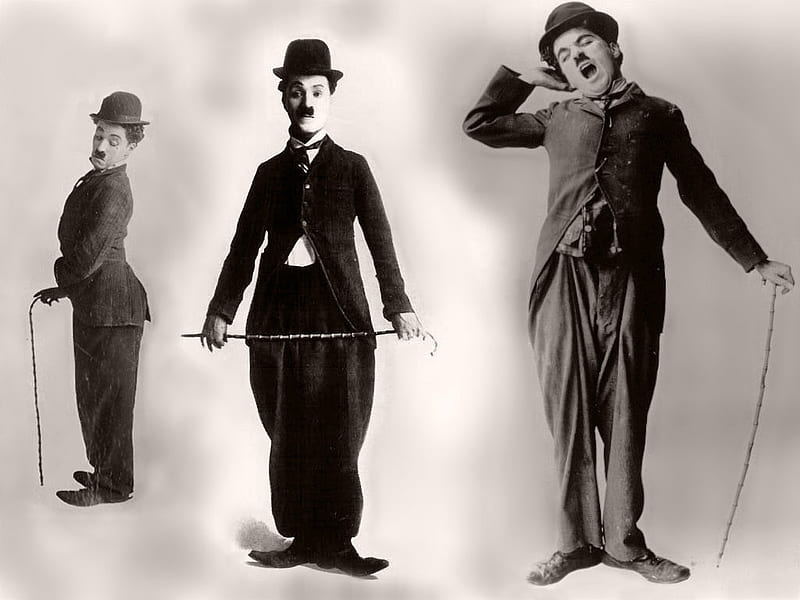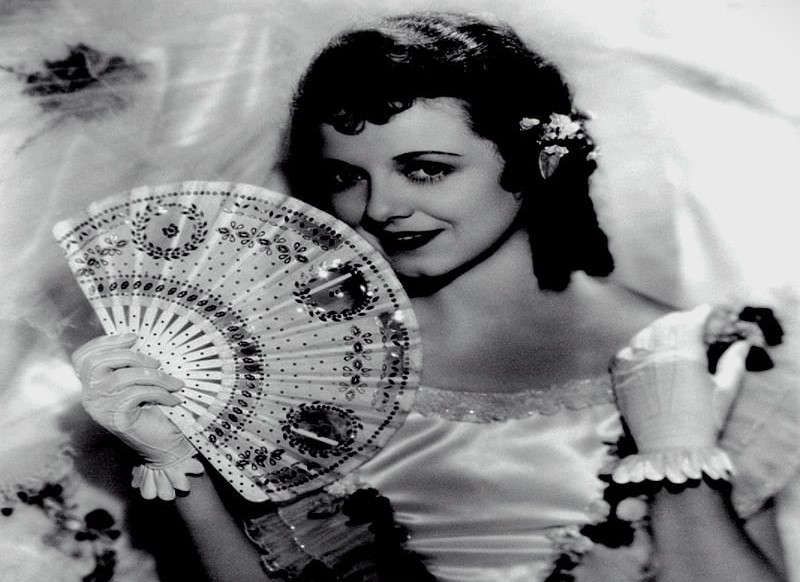Introduction
It’s simple to overlook the captivating artistic quality of silent films in the era of superhero flicks with loud soundtracks. The silent film soundtrack had a pivotal role in evoking emotion, suspense, and mood in these early cinematic classics. Live music was essential to improving the cinematic experience during the silent period, which had its own distinct appeal despite the dominance of intricate sound design and symphonic compositions in modern cinema.
This essay explores the history, relevance, and resurgence of interest in this enthralling musical genre as it dives into the neglected skill of writing music for silent films.
Table of Contents


The Birth of Silent Film Score Composition
Silent films began to appear in the late 19th and early 20th centuries, marking the beginning of the cinematic era. As the name implies, there was no synchronized sound in these movies. Rather, they made extensive use of live musical accompaniment to improve the audience’s watching experience and elicit strong feelings.
The Need for Accompaniment
A unique kind of entertainment, silent films captivated viewers all around the world. But since there was no spoken dialogue or use of sound effects, music was very necessary to fill the silence and make these moving pictures come to life. During that time period, live music was frequently played in movie theaters by pianists, organists, or even small orchestras positioned close to the screen while the movie was being shown.
Elevating the Viewing Experience
The soundtracks of silent films were more than just background noise; they were an integral part of the narrative. The film’s pacing was carefully considered by the composers, who used music to heighten the tension in dramatic sequences and lighten the mood in humorous ones. A crucial component of the cinematic experience, the music was expertly timed to match the action on screen.
The Role of Emotion
Creating an emotional response in the viewer was one of the main goals of silent movie soundtracks. The soundtrack established the mood and deepened the audience’s emotional connection to the characters and the tale, whether it was the thrilling pursuit sequence, the sensitive love story, or the spooky horror movie.
Leitmotifs and Musical Themes
Leitmotifs are recurrent musical themes connected to particular characters or scenes in a film that are frequently employed by composers. These leitmotifs gave the narrative depth and consistency by making it simple for the audience to identify when a given character or topic was present. This method became the standard for writing soundtracks for silent films.
Essentially, the development of silent film music composing marked a significant turning point in the history of cinema. It proved how music might improve a story, and many of the methods created at this time are still used in contemporary cinema score. Even if silent movies are becoming increasingly rare, their influence on the craft of filmmaking and the function of music in movies continues to be evidence of the inventiveness of the first directors and composers.
The Artistry of Silent Film Scores
Silent film soundtracks are a distinct kind of cinematic art that arose during the silent film period, which lasted from the late 19th to the early 20th century. The audience was drawn into the plot and the emotional effect was amplified by these musical pieces, which served as more than just background music.
Crafting Emotions through Music
The power of silent cinema music to evoke a wide variety of emotions was one of its most amazing features. The main form of communication between the movie and its viewers, in the absence of verbal dialogue, was music. In order to portray pleasure, grief, suspense, or excitement, composers meticulously composed soundtracks to match the atmosphere of the situations utilizing melodies, rhythms, and orchestration.
Heightening Dramatic Tension
Composers for silent films were experts at creating tense, dramatic scenes. The music was crucial in raising the audience’s emotional response, whether it was during an exciting pursuit scene, a love moment, or the big battle. The impression of a movie may be greatly influenced by the timing and arrangement of its soundtrack.
12 Point for Ultimate Guide to How To Become An Actor
The Birth of Leitmotifs
The idea of leitmotifs—repeated musical themes connected to certain characters, objects, or concepts in the film—was first presented by silent cinema soundtracks. These themes gave the narrative coherence and depth by acting as melodic symbols. A leitmotif added layers of meaning to the story since the audience understood it quickly when it was played.
Composers as Collaborators
Composers for silent films frequently collaborated closely with directors and filmmakers, which made them essential partners in the artistic process. Because of their close collaboration, composers were able to perfectly blend sound and picture by customizing their music to the director’s vision.
Live Performances
Live music was frequently used to accompany silent films in their early years. Movie theaters featured live performances by pianists, organists, and small orchestras, adding a special live touch to each showing. To further highlight their artistic abilities, these musicians were tasked with the difficult challenge of improvising music that matched the events on screen precisely.
Charlie Chaplin: A Multifaceted Genius
Charlie Chaplin, one of the most renowned characters in silent cinema history, not only wowed viewers with his comic prowess but also demonstrated his compositional abilities. He wrote original music for several of his movies, including “City Lights,” showcasing his profound comprehension of the relationship between narrative and music.
In conclusion, the mastery of early composers and filmmakers is demonstrated by the artistic quality of silent cinema compositions. These soundtracks were a vital and important component of storytelling, not just a minor detail in the history of film. Even though sound brought an end to the silent film era, its legacy endures in the form of its lasting impact on contemporary film scoring and the understanding of the continuing power of music in motion pictures.
The Revival of Silent Film Scores
The invention of synchronized sound in movies may have put an end to the silent film period, but the art of silent film soundtracks is seeing a spectacular renaissance in the twenty-first century. This distinctive style of cinematic storytelling is being recognized and celebrated by film aficionados, historians, and musicians alike.
Preservation and Restoration
The tireless work of archivists and preservationists of motion picture history is one of the main reasons behind the resurgence of silent film music. Many silent movies have had their original musical compositions painstakingly restored to their former splendor throughout the years. With the help of these restored movies, viewers from today may get a look into the past and recognize the artistic talent of both composers and directors.
Silent Film Festivals
Festivals featuring silent films have grown in popularity recently, attracting viewers from all around the world. A carefully chosen collection of silent films is screened at these events, sometimes with live musical accompaniment. Skilled orchestras and musicians bring these timeless movies to life by performing the original soundtracks or composing fresh, unique works that give a nod to the past while bringing the present to the past.
Modern Composers Paying Homage
Classic silent films are receiving new soundtracks by modern musicians and composers as a way of honoring the silent cinema period. These new pieces honor the essence of the originals while providing new perspectives. These kinds of projects help to close the gap between the past and the present and guarantee that silent cinema music remains an evolving art form.
Educational Initiatives
Film schools and educational organizations are realizing how important it is to educate the background and methods of silent film score. Aspiring filmmakers and composers learn how music may influence cinematic storylines by studying the works of early silent film composers. By emphasizing education, we can make sure that the history of silent cinema soundtracks is preserved for next generations.
Cultural Significance
The cultural impact of silent cinema music extends beyond their artistic merits. They provide a glimpse into the historical and social milieu of their era. Re-examining these movies and their soundtracks helps modern viewers comprehend early 20th-century society and culture better.
A Timeless Art Form
The revival of silent cinema soundtracks emphasizes how ageless this genre is. Music still has the same power to communicate emotion and cut through linguistic boundaries as it did a century ago. The power of visual narrative is enhanced by music, which is a global language that silent cinema scores serve to remind us of.
In conclusion, the resurgence of silent cinema soundtracks is evidence of the art form’s ongoing significance and popularity. It acts as a source of inspiration for modern composers and filmmakers in addition to maintaining a rich cinematic legacy. We have a fresh respect for the narrative power of music and its capacity to bind audiences of all ages as we look back on the silent cinema period.
The Hidden Gems of Cinema’s Golden Age
The late 1920s to the early 1960s are known as “cinema’s golden age,” and it is frequently recognized for its classic films and illustrious stars. But there is a wealth of lesser-known cinematic treasures hidden underneath the mainstream and box office hits. These undiscovered treasures possess a distinct allure and remarkable cinematic quality, despite their relatively lesser recognition.
Unconventional Storytelling
This era produced a lot of hidden treasures that dared to challenge the norm in narrative. By experimenting with story structure, character development, and subject matter, these movies pushed the limits of what was possible in cinema. They frequently evoked deep reflection and unanswered issues in the minds of listeners.
Niche Genres and Subcultures
Hidden treasures investigated minor genres and subcultures, while mainstream movies dominated the news. These lesser-known movies, whether they were surrealist, avant-garde, or film noir, offered a stage for bold and creative narrative. Their deep creative and intellectual qualities frequently drew very specialized audiences.
Forgotten Directors and Actors
Talented directors and actors who, in spite of their outstanding contributions, stayed in the background of their more well-known peers were the hidden treasures behind these masterpieces. These filmmakers were fearless in their pursuit of their artistic ideals and frequently took calculated chances.
Cultural and Social Commentary
A lot of underappreciated Golden Age films made social and cultural commentary on the hot-button problems of the day. These films offered perceptive analyses of society, addressing issues like politics, gender, racism, and class in frequently innovative ways.
Visual and Cinematic Innovation
Some unsung heroes were forerunners in innovative film and visual arts. They experimented with editing styles, special effects, and cinematography, laying the foundation for later developments in filmmaking. These movies had a lasting impact on the business and shaped the work of upcoming directors.
Rediscovery and Appreciation
Many of these underappreciated treasures have returned to prominence in recent years because to the work of researchers, cinema aficionados, and restoration projects. Film festivals, retrospectives, and special edition DVD and online releases have made it possible for contemporary viewers to find and recognize the genius of these underappreciated masterpieces.
The Legacy of Silent Film Scores
In the history of film, the silent film era may seem like a distant memory, yet it has left a lasting impact, especially in the field of film soundtracks. Even if contemporary blockbusters with elaborate soundtracks have replaced silent films, the legacy of the first silent film scores lives on in the film industry.
Pioneering the Use of Music in Film
The use of music as a storytelling device in movies began with the soundtracks to silent films. They proved that music could elicit strong feelings, build suspense, and draw listeners into the narrative. The importance of music in contemporary cinema was made possible by this innovative mentality.
Shaping Modern Film Scoring
Modern cinema scoring is still influenced by the methods created during the silent film period, such as the usage of leitmotifs, which are recurrent musical themes connected to specific characters or events. These early inventions are being used by composers today to create soundtracks that are distinctive and emotionally impactful.
The Marriage of Music and Image
Music and visual storytelling have a potent connection, as demonstrated by silent cinema soundtracks. This era was distinguished by the union of music and picture, which is now a cornerstone of modern cinema. Music gives dimension to the story, directs the viewer’s emotions, and amplifies the emotional effect of a scene.
Innovations in Film Composition
The challenge for composers during the silent cinema period was to write music that flowed naturally with the action on screen. The need for accuracy and timing stretched the limits of film composition, leading to creative methods that are still useful in modern cinema scores.
Resurgence of Interest
Interest in silent movies and their original soundtracks has grown in recent years. To repair and preserve these cinematic gems, archivists and film historians have put forth a great deal of effort. The resurgence of interest in silent film soundtracks has resulted in screenings of these movies with live musical accompaniment, giving viewers another chance to enjoy their beauty.
Charlie Chaplin’s Enduring Influence
A legend of the silent film period, Charlie Chaplin wrote music for several of his films in addition to gracing the screen with his legendary performances. His skill in fusing melancholy and comedy with music has a lasting impact on the field of film score.
In summary, the legacy of silent film music bears witness to the lasting influence of the mastery of early filmmaking. Even if filmmaking technology has advanced significantly, the age-old ideas of enhancing storytelling using music still hold true. Let’s not overlook the priceless contributions made by silent film soundtracks and their ongoing effect on the cinematic environment as we celebrate the achievements in contemporary filmmaking.
Recommendations
While the list of hidden gems is extensive, a few notable examples include:
- “Sunset Boulevard” (1950) – A dark and insightful exploration of Hollywood’s underbelly.
- “Detour” (1945) – A classic film noir with a hauntingly atmospheric narrative.
- “La Belle et la Bête” (1946) – A visually stunning French fantasy film.
- “Ace in the Hole” (1951) – A scathing critique of media sensationalism and human exploitation.
- “On Dangerous Ground” (1951) – A unique blend of film noir and psychological drama.
Conclusion
In conclusion, the underappreciated masterpieces of Hollywood’s Golden Age demonstrate the breadth and complexity of filmmaking at a pivotal moment in the history of the medium. These movies never quite achieved the same degree of recognition as their more well-known peers, but their distinctive narrative, striking aesthetics, and enduring cultural significance never fail to enthrall viewers. Exploring the cinematic canon and finding these undiscovered gems is a fulfilling experience.
FAQ: Rediscovering Silent Film Scores
Question 01: Why were silent film scores so important?
Answer: Because they supplied the emotional and narrative context that speech was unable to offer, silent cinema music were crucial. They were an essential component of early film and enhanced the experience for the viewer.
Question 02: Who were some notable composers of silent film scores?
Answer: Among the renowned composers who got their start in silent movies are Max Steiner and Dmitri Shostakovich. Their work served as a precursor to contemporary cinema music.
Question 03: Why did silent film scores fade into obscurity?
Answer: Many silent film compositions were abandoned as a result of the 1920s cinematic sound shift, which was spearheaded by “The Jazz Singer” in 1927. Over time, they were frequently thrown away, misplaced, or forgotten.
Question 04: How can I experience silent film scores today?
Answer: Attending silent cinema festivals is an excellent opportunity to watch silent films with live musical accompaniments. The increased popularity of several of these events in recent years has facilitated audiences’ rediscovery of this art form.
Question 05: What is a leitmotif in silent film scoring?
Answer: A leitmotif is a recurrent musical theme that is connected to particular characters or scenes in a movie and gives the narrative depth and coherence.
Best Film Directors In Indian Cinema
The Art Of Acceptance | Acceptance is a Great Source of Great Acting
Creating an Actor Website: A Comprehensive Guide for Aspiring Performers




great work!
I’ve tried many acting resources online, but this one stands out for its comprehensive content and real-world advice. It’s the perfect blend of acting education.
This website is a game-changer for actors! The resources are top-notch, and the community is incredibly supportive. I’ve learned more here in a month than I did in years of acting classes.